Genre: RPG Developer: Strategic Simulations Publisher: Electronic Arts Players: 1 Released: 1991
Back in the heyday of the Genesis, EA was responsible for porting a large number of games from the PC and Amiga onto the Genesis, opening up diligent console players to the obtuse, diverse world of early RPGs. Unlike console RPGs, many of EA’s ports came packed with massive manuals that were hundreds of pages long, giving players all the stats, instructions, maps, and world-building they could ask for. Though some of the ports have not aged as well as others, their ambition and scope was incredible, and they led the way to the RPGs we play today. Buck Rogers is one of those games. But is it any good?
Buck Rogers’ game engine is the legendary Gold Box game engine, used for the classic Dungeons & Dragons series of games from the ’80s and ’90s. If you’ve played any of the Forgotten Realms, Krynn, or Savage Frontier series, then you’ll know what to expect. You roll a party of six characters and choose their races, genders, and classes, as well as roll the dice for HP, attack power, defense, etc. Because this is the science-fiction world of Buck Rogers, elves and dwarves are switched out for Desert Runners and Tinkers, and instead of being a knight or a mage, you get to be a rocket jock or a medic. The world is based on the famous Buck Rogers television show from the late ’70s, which was based on a comic strip from the ’20s. Yes, ol’ Buck was exploring space before Captain Kirk or Luke Skywalker were ever born, though by the ’80s he was probably nothing more than a cultural afterthought. SSI decided to graft his license onto its engine, and released two PC adventures, one of which was ported to the Sega Genesis in 1991. Countdown to Doomsday is that game.
The overall story is that you are a band of cadets from the NEO agency who are tasked with taking down the nefarious intergalactic terrorists, RAM. The game is broken up into seven separate missions, which makes it easy to play in sessions. These missions range from clearing an abandoned lab of mutates to infiltrating a space pirate’s ship. Though there are only seven missions, they are very involved, forcing you to make quick decisions while exploring multi-floored dungeons and areas, all the while battling enemies. There are also a number of small, optional side missions that have little impact on the plot but are nice to see. There are also multiple encounters that give you the choice to actually do some role-playing, such as choosing to talk or attack, choosing whether to help out an NPC, or choosing rather or not to let an NPC join your team. Unlike some older RPGs, Buck Rogers really gives you a sense of urgency. Perhaps it’s the mission structure or how certain sections give you a time limit or perhaps how the game is set in the harshness of outer space, but it does get your blood pumping.
In between missions, you can travel through the solar system to Mercury, Venus, Earth, and Mars, as well as several asteroids and moons. While many of these planets consist only of a single spaceport, it still gives you a bit of a sense of a world. One annoying factor of gameplay is the random space encounters. While traveling from planet to planet, you can run across enemy ships as random encounters. These battles are too hard and take way too long, breaking up the pace of travel. They are a chore to slog through, watching both ships constantly attacking and missing, and many times, you’ll be massacred while your lasers and shots simply whiff into space. It’s frustratingly difficult.
The land-based random encounters aren’t a piece of cake either. In fact, you’ll likely be seeing the game over screen a few times before you reach the end of the game. The aforementioned Gold Box games were notoriously unforgiving, and so is Buck Rogers. However, the difficulty varies wildly. Sometimes, you can blow through enemies in a few turns. Sometimes, you’ll find your entire party getting slaughtered in a flash. Battles are not one on one affairs – individual battles can involve anywhere from four to ten to fifteen enemy troops, all of which can take a lot of hits.
Turn-based strategy is the name of the game, here. You take control of each of your characters and sometimes a few NPCs or soldiers and move them around, one at a time. The length of each battle really hurts the pace of the game and artificially lengthens the missions. The quick combat option will basically play the battles for you, and it speeds up the process. Your characters will eventually go down on the battlefield, and if you have trained certain party members in medicine, they can be revived through first aid. Many times, though, the first aid fails and you waste a turn.
As this is a port of an older PC game, the graphics are not top notch. Sprites are small and sometimes you’ll be straining to figure out what you’re looking at. The music ranges from mildly annoying to ear-shreddingly awful, with the worst battle theme music I’ve ever heard – a robotically repeating drum beat that just won’t stop looping. It’s all so organ-y and drone-y. Thankfully, there’s the option to turn off the music in-game. There’s also the option to save anywhere, even in dungeons, which is nice.
All in all, Countdown to Doomsday is a pretty niche title. It’s an older game from the wild west days of RPGs, before the genre had a chance to refine itself. As such, it’s very rough around the edges, with a high difficulty level, sub-par graphics, awful sound, and a dated interface. But if you have the time to sink into it, there’s a really fun role-playing adventure to be had here.
SCORE: 7 out of 10

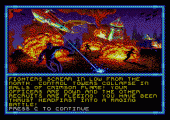
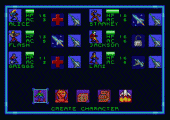
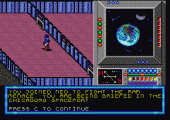
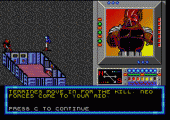
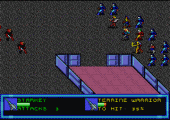
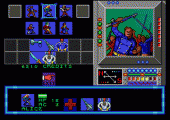
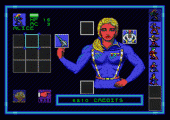
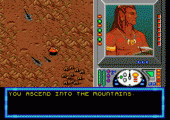
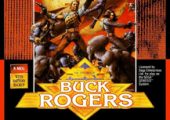
Recent Comments